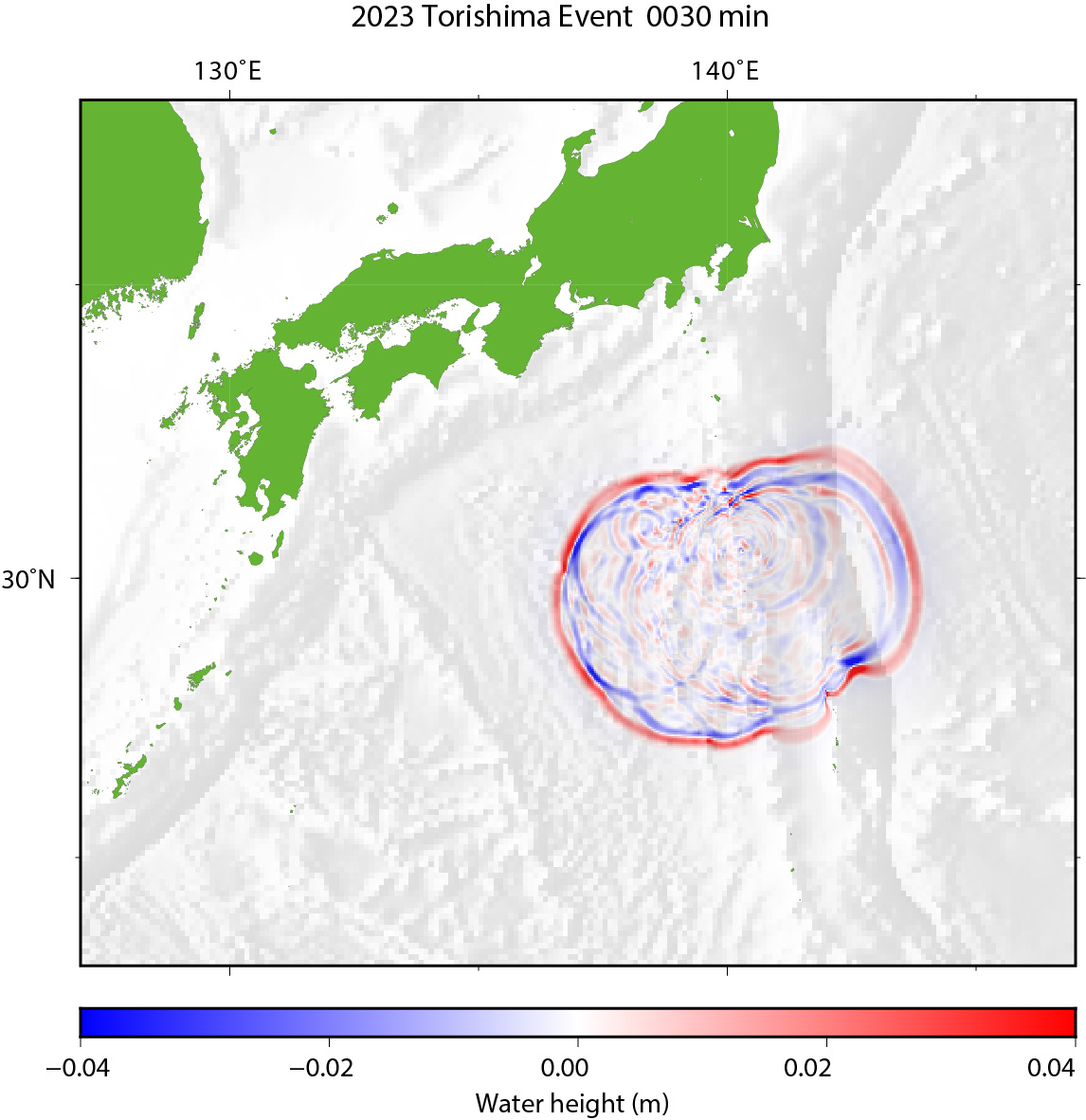| Event Near Torishima Island on October 8, 2023 |
We have simulated the tsunami generated from events near the Torishima Island, which started around 20:25 (29.707°N, 139.902°E, depth = 10.0 km, M = 4.9 at 20:25:23 UTC according to
USGS) on October 8, 2023 (Fig. 1).
The assumed tsunami source is located inside the earthquakes area, which has an about 0.9 m uplift (Fig. 1, right).
As the initial condition for tsunami, static deformation of the seafloor is calculated for a rectangular fault model [Okada, 1985] using the source model.
The used bathymetry data is the 15 arc-second grid data from
GEBCO_2023, which was resampled to 12 arc-second grid data.
To calculate tsunami propagation, the linear shallow-water, or long-wave, equations were numerically solved by using a finite-difference method [Satake, 1995].
We have downloaded the tide gauge data
from the
JCG's and
UNESCO/IOC's web sites, respectively,
and compared the simulated tsunami waveforms and the observed ones (Fig. 2).
We can see the tsunami propagation in the Pacific Ocean (Fig. 3).


Fig.1 Location of Tide Gauges and Tsunami Source Model
The red lines indicate uplist with the contour interval of 0.2 m. Earthquakes determined by USGS are shown by red circles.

Fig.2 Maximum Height of Simulated Tsunami and Tsunami Waveforms
Solid lines in red indicate the observed tsunami waveforms. The blue lines are calculated tsunami waveforms. Time zero corresponds to 20:25 (UTC).

Fig.3 Tsunami Propagation (Click to start animation)
The red color means that the water surface is higher than normal sea level, while the blue means lower.
| by Yushiro Fujii (IISEE, BRI) and Kenji Satake (ERI, Univ. of Tokyo) |
|
|
| References |
|
Okada, Y. (1985), Surface Deformation Due to Shear and Tensile Faults in a Half-Space, Bull. Seismol. Soc. Am., 75, 1135-1154. Satake, K. (1995), Linear and Nonlinear Computations of the 1992 Nicaragua Earthquake Tsunami, Pure and Appl. Geophys., 144, 455-470. GEBCO Compilation Group (2023) GEBCO 2023 Grid (doi:10.5285/f98b053b-0cbc-6c23-e053-6c86abc0af7b) |
Last Updated on 2023/10/10